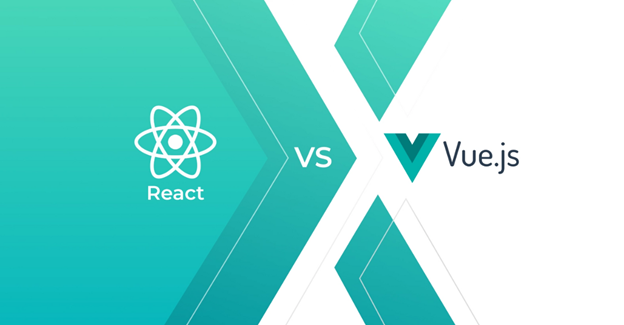In the dynamic landscape of internet improvement, choosing the right JavaScript framework can significantly effect the achievement of your challenge. Two famous selections, React and Vue, stand out for their versatility, performance, and strong community assist.
React, evolved with the aid of Facebook, has won great adoption for its component-based architecture and virtual DOM rendering. Its declarative method to building UIs simplifies the development method and complements code maintainability. React’s ecosystem is wealthy with libraries and equipment, along with Redux for country management and React Router for routing.
On the alternative hand, Vue, created via Evan You, gives a modern framework that is incrementally adoptable. Vue’s simplicity and ease of integration make it an attractive alternative for each small-scale projects and massive-scale applications. With its reactive information binding and straightforward syntax, Vue empowers builders to construct interactive user interfaces effectively.
When determining among React and Vue, numerous factors come into play. React’s considerable ecosystem and huge community aid make it a solid desire for organization-degree projects requiring scalability and performance optimization. Meanwhile, Vue’s mild learning curve and versatility make it an exquisite option for startups and builders looking for rapid prototyping and quick deployment.
Understanding React and Vue
React and Vue are two prominent JavaScript frameworks broadly used for constructing interactive consumer interfaces and unmarried web page packages. Understanding their center concepts and differences can assist developers make knowledgeable decisions whilst selecting the right framework for his or her initiatives.
React, developed via Facebook, follows an element-based architecture where UIs are constructed as a composition of reusable additives. It makes use of a digital DOM for green rendering, updating handiest the necessary parts of the UI whilst information modifications. React’s one-way facts flow and JSX syntax simplify the technique of building complicated UIs and dealing with software states. Additionally, React boasts a big atmosphere with libraries like Redux for kingdom control and React Router for navigation.
Vue, created with the aid of Evan You, adopts an innovative framework method, allowing builders to incrementally combine it into present initiatives. Vue’s reactivity device automatically updates the UI when statistics adjustments, improving developer productiveness and code maintainability. Its template-based totally syntax is intuitive and easy to study, making it on hand to builders of all ability ranges. Vue additionally gives integrated answers for kingdom control (Vuex) and routing (Vue Router), streamlining the improvement system.
When choosing between React and Vue, builders ought to consider factors inclusive of challenge requirements, team expertise, and network assistance. React excels in big-scale programs requiring overall performance optimization and enormous tooling support. In comparison, Vue’s simplicity and versatility make it an exquisite preference for fast prototyping and smaller initiatives.
Use Cases: Real-world Applications
React and Vue, as flexible JavaScript frameworks, find great applications across a wide array of actual-global scenarios. Understanding their use cases can offer precious insights into how these frameworks excel in unique contexts.
In e-trade, React’s factor-based totally architecture shines via facilitating the creation of dynamic and interactive product catalogs, buying carts, and checkout processes. Its virtual DOM rendering ensures clean overall performance, whilst libraries like Redux permit efficient kingdom control for complex programs.
Similarly, Vue’s simplicity and flexibility make it a really perfect choice for constructing responsive and intuitive user interfaces in content material management systems (CMS) and blogging platforms. Vue’s reactivity system simplifies content updates and complements the person experience, making it less complicated to manage huge amounts of dynamic content.
In the area of records visualization and dashboard creation, React’s environment gives powerful libraries like D3.Js and Victory.Js, permitting developers to construct visually stunning and interactive charts, graphs, and dashboards. React’s declarative approach to UI development streamlines the process of integrating information visualization additives into packages.
On the alternative hand, Vue’s seamless integration with libraries like Chart.Js and Vuetify makes it similarly adept at developing compelling statistics-driven visualizations and dashboards. Its revolutionary framework nature allows developers to incrementally add and customise functions as wanted, making it nicely-suitable for agile development procedures.
Future Trends and Predictions
As web development continues to conform, React and Vue continue to be at the leading edge, driving innovation and shaping the future of front-end frameworks. Predicting destiny trends includes knowledge of the cutting-edge landscape and expecting how those frameworks will adapt to rising technologies and developer alternatives.
One trend that is possibly to continue is the emphasis on overall performance and optimization. With the developing call for quicker and greater responsive internet applications, both React and Vue will need to adapt to better leverage advancements in browser capabilities and network infrastructure. This can also contain in addition optimization of rendering approaches, progressed managing of big datasets, and greater help for lazy loading and code splitting.
Another area of focus is likely to be on developer revel in (DX) and tooling. As projects become increasingly more complex, developers seek equipment and workflows that streamline development techniques and improve productivity. React and Vue will probably spend money on improving developer gear, increasing guide for modern-day JavaScript capabilities, and enhancing documentation to make it simpler for builders to construct and maintain packages.
Furthermore, the mixing of system learning and synthetic intelligence (AI) into internet improvement workflows gives thrilling opportunities for React and Vue. Predictive analytics, customized consumer reports, and automated code era are just some of the regions where AI can increase front-end development. Both frameworks may also include AI-pushed capabilities and integrations to empower builders and enhance the abilities of internet packages.
Conclusion
In the end, Vue vs React remains the leading pick in 2024 for frontend development, every supplying unique strengths and use instances. Understanding their variations empowers developers to choose the first-rate healthy for their tasks.



